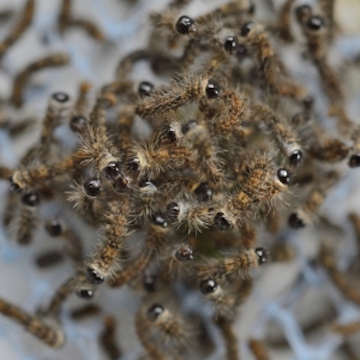The silk moth, Latin Bombyx mori, originates from China and is a domestic animal. Without human help it could not survive in the wild. The freshly hatched caterpillars must be fed on cut mulberry tree leaves as the young animals are unable to eat whole leaves unaided.

Over the course of millennia numerous breeds have emerged. They produce cocoons of vastly different colour, form, and quality. The most productive silk worms produce a thread over one kilometre long.
Sericulture is a complex form of farming. In order to feed the silk worms, mulberry trees must be cultivated, as the highly specialized domesticated animal only feeds on this plant. The breeding of the caterpillars is complex as the animals react sensitively to climate and food. If not reared in a species-appropriate fashion they are prone to diseases.
In Europe sericulture has been practiced since Late Antiquity, initially in Byzantium, later in Western Europe, especially in Italy and France. In Switzerland sericulture was widespread in the Canton of Ticino through to the 19th century. Today, raw silk is predominately manufactured in China, India, and Brazil.
In 1566 the religious refugee from Locarno, Evangelista Zanino, was granted permission by the Zurich city council to cultivate mulberry trees on the Selnauwiese. This first attempt to manufacture silk in this country failed. Today the association Swiss Silk promotes sericulture in a number of Swiss cantons. Currently 25 kilograms of Swiss raw silk is produced annually.